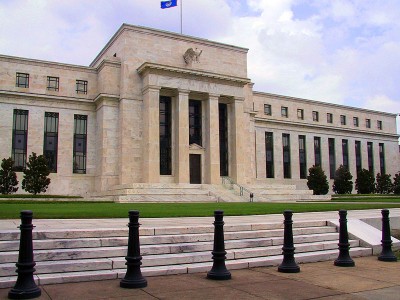Let’s begin with currency wars once again. Why? It is a real current issue. Look. Francois Hollande assured his partners within the euro zone at the beginning of the week that strong Euro is nothing for France and for others as well. He said that “The euro should not fluctuate according to the mood of the markets,” and that “A monetary zone must have an exchange rate policy.” Germans responded exactly one day later. The spokesman of the government just mentioned that they are prepared for a discussion, but they are definitely convinced about the necessity for the fluctuation of rates. They don’t “think that an exchange rate policy is an appropriate instrument to boost competitiveness. It may set some short-term impulses, but nothing sustainable.” The end of the week came. And He just said: “Euro rate, face down” and so it happened. No, it was not God, it was just Super Mario Draghi, President of the ECB, and he just gave an indirect signal that further interest rate cuts remain a possibility. His words have this power, at least for now. It seems that market actors believe in everything he says. The same story was with the Outright Monetary Transactions Program. The ECB was prepared to buy any amount of debt of the problematic euro member’s states, but has not spent a cent on it. How long will markets and people believe in the purchasing power of the Euro? Only the future will tell.
European leaders made a deal about the EU budget on Friday, very early in the morning after the 25-hour marathon of a discussions. The outcome is explained as David Cameron´s victory. But I am not so sure. On the one hand, there is a spending ceiling of 960 billion euros down from the proposal of 1.047 trillion euros and which is 34 billion down compared to the 2007 – 2013 budget. But it is only a plan. Not a reality as we know from Slovakia’s case. Cameron also won a symbolic battle on the 1 billion-euro reduction in salaries and administrative costs for employees of the EU. The budget story could not be finishing because four biggest parliament political factions made a conjoint statement that they cannot accept the proposed budget because it is not growth-oriented. They emphasize that the real problems with European Parliament, which could agree or disagree with the budget negotiations, have started just now. The Parliament cannot make changes to it. So we will see.
Cyprus rescue plan is still in danger. Germany’s opposition, Social Democrats (SPD), set up some conditions for Cyprus bailout as Germany´s general Election Day is getting closer and closer. And there are allegedly growing numbers of rebels in Merkel´s camp as well. He generally demands that Cyprus must change legislation concerning its tax laws and Cyprus must join other euro member states to institute a financial transaction tax. So we will see what really is happening, but I bet on changing laws and bailout program.
German industrial production rose by 0.3 % compared to the November data but still declined 1.1 % on a yearly base. The economy is allegedly rebounding from a contraction. Really? As you can see, it depends on how you look at the data – from a monthly or yearly perspective. That’s the beauty of statistics. Slovak industrial production fell by 4.4 % on a yearly basis, which is pretty pessimistic, especially concerning the public finance situation in 2013.
As we mentioned many times, Chinese data are some kind of an alchemy. According to Sandy Cutler, Executive officer of Eaton Corp. if China’s GDP is two times smaller, official numbers (7.8%) are based on other data from the country than a significant decline in electricity and consumer consumption.
As Congress enacted a law to suspend debt ceiling till May 18th 2013, the Treasury announced that it will need to raise some $331 billion for a new debt till the end of March. In other words, the total debt could hit 105% of GDP on March 31st if we assume a 1% growth in Q1 GDP. The total amount of debt will be $16.763 trillion, or maybe more understandably, $16,763,000 million, or approximately 10 million worth of pieces of the most expensive cars in the world. But do not worry. If the FED is to continue to buy treasuries at the same pace as expected in 2013, it is able to buy the US debt worth 64% of all new debt in a pessimistic scenario. Everybody considers this a sustainable policy, at least for now. Government spend, FED creates money ex nihilo (out of nothing) and buys treasuries to sell them sometime in the future once better economic conditions occur. And the only unsolved question is: When will it happen? Because social security system unfunded liabilities are only predicted to double to $3.2 trillion in the following 10 years. And just by the way, and to make the picture clearer, the current federal social program spending is bigger than the current federal revenues – it is also the reason why the US must borrow. So, when exactly will the better tomorrow come?



